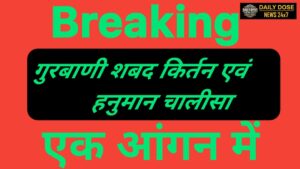How to follow a Cutting Diet to lose weight
Cutting is becoming increasingly sought-after exercise technique.
It’s an exercise to lose fat that people who train for bodybuilding and fitness use to build as lean as possible.
Typically , it’s initiated a few months before an exercise regimen, it involves a weight reduction diet designed to keep as much muscle as it is possible.
This article will help you follow a cutting diet for weight loss.
What is a cutting diet?
Cutting diets are typically utilized by fitness enthusiasts to cut down on body fat while keeping muscles mass.
The key distinctions with other weight loss strategies is the fact that a cutting diet is specific to each person’s needs, tends to be more high in carbs and protein and should be accompanied by weightlifting.
Regularly lifting weights is essential because it promotes muscle growth as well as assisting in preventing muscle loss as you begin to cut calories.
A cutting diet can last for 2-4 months, based on how fit you are prior to dieting. It is usually scheduled around bodybuilding competitions, athletic events, or events like holidays.
A SUMMARY
The goal of a cutting diet is to be as lean as possible while maintaining muscle mass. It’s usually done for about 2-4 months prior to the bodybuilding event or other events.Read here https://uniquelifetips.com/workout-routine/ At our site
How to do a cutting diet
A diet cut is tailored to each individual , and will require you to establish your nutritional requirements.
Calculate your calorie intake
Fat loss happens when always consume less calories than you burn.
The number of calories that you should consume per day to lose weight is dependent on your weight, the size of your body and weight, your lifestyle, gender as well as your fitness level.
In general, a woman needs around 2500 calories per day to maintain her weight but 1,500 calories to shed 1 kilogram (0.45 kilogram) of fat every week. In comparison, an average man needs around 2500 calories to maintain his weight or 2,000 calories to shed the same amount.
The slow, even pace of weight loss — such as 1 pounds (0.45 kilograms) or 0.5-1% or more of bodyweight per week — is best for a cutting diet.
Even though a greater deficit of calories may allow you to lose weight quicker, research has confirmed that it may increase the chance of losing muscle which isn’t a good thing for this particular diet.
Determine your protein intake
The need to consume enough protein is essential on a diet plan that involves cutting calories.
Numerous studies have revealed that eating a lot of protein can aid in fat loss through boosting your metabolism, cutting down on hunger, and protecting the mass of lean muscle.
If you’re on a strict diet, it is essential to consume more protein than you’re trying to keep the weight or increase muscle mass. This is because you’re eating fewer calories, yet you’re working out regularly in a way that boosts the need for protein.
There are numerous studies that suggest 0.7-0.9 grams of protein per pound of physique weight (1.6-2.0 grams per kg) is sufficient for conserving the muscle mass of a cutting diet.
For instance, a 155-pound (70-kg) person is advised to consume between 110 and 140 grams of protein every day.
Determine your fat intake
Fat plays an essential role in hormone production and is the reason it is so crucial to follow a diet that is slim.
Although it’s normal to decrease fat intake on a cutting meal, not eating enough could affect the production of hormones like testosterone and IGF-1, which assist in maintaining the muscle mass.
For example, studies demonstrate that reducing intake of fats from 40% to 20% of calories total lowers testosterone levels by just a tiny although significant degree.
But, there is some evidence that a drop of testosterone levels do not always mean that you lose muscle — so long as you consume sufficient protein and carbs.
Experts recommend that on this diet 15-30 percentage of your calories should be from fat.
One gram of fat has 9 calories. Thus, anyone on a 2,000-calorie regimen should consume 33-67 grams per day on a diet that is cutting diet.
If you’re active, the lower end of the fat range could be the most suitable, as it allows higher carb intake.
Find out your carb intake
Carbs are a major factor in the preservation of muscle mass taking a diet plan that cuts calories.
Because your body tends to use carbs for energy instead of protein. Eating an enough carbohydrates may combat muscle loss.
Additionally, carbs could help improve your performance during your workouts.
On a diet with a reduced-calorie component, carbohydrates should be the primary source of calories once you have removed proteins and fat.
Protein and carbs provide four calories for each gram and fat has 9 calories per gram. After subtracting your protein and fat requirements from your total calorie intake and then divide the remainder by 4, which should indicate how many carbs you’re permitted to consume per day.
For example the 155-pound (70-kg) person who is on the 2,000-calorie diet of cutting consume 130 grams of protein along with 60 grams of fat. The remainder of 1,020 calories (255 grams) can be consumed by carbs.
SUMMER
To plan a cutting diet then you must calculate your protein, calories sugar, fat, and carb requirements based upon your physical weight and your lifestyle.
Do meal times affect your meal?
Meal timing is an approach that is used to build muscle the loss of fat and performance.
Although it could benefit athletes in competition, it’s just not as crucial for fat loss.
For example, many studies have shown that endurance athletes may improve their recovery by timing their meals as well as carb consumption in relation to exercise.
But, this isn’t needed for the diet plan to be cut.
Instead, you should focus on eating whole foods and getting enough protein, calories, energy, and fat throughout the day.
If you’re frequently hungry an energy-rich breakfast can keep you fuller for the remainder of the day.
A SUMMARY
Not having your meals timed isn’t required in the diet plan, but could help endurance athletes during their training.
Cheat meals and Refeed days
Cheat meal and/or refeed meals are typically incorporated into cutting diets.
The occasional cheat meal is intended to ease the rigors of a specific diet while refeed days increase your carb intake once or twice per week.
A higher carb intake has multiple benefits, including replenishing your body’s sugar stores and enhancing exercise performance and balancing several hormones.
For instance studies have revealed an increase in calories during a meal can raise levels of fullness hormone, called leptin. Additionally, it can temporarily boost the metabolism of your body.
Although you could gain weight after cheat meal or refeed day, this can be water weight which will be lost over the next few days.
But it’s still possible to overeat in these situations to thwart your weight-loss efforts. Additionally, these habits could lead to unhealthy behaviors, particularly for those who tend to be emotional eating.
Thus, cheat meals as well as day-offs for refeeding aren’t necessary, and should be planned in advance.
A SUMMARY
Cheat meals and refeed days can boost your mood and fitness performance hormone levels. However, they’re not needed to be part of a strict diet. They could hinder your progress if they are not planned correctly.
Helpful tips for a cutting diet
Here are some helpful suggestions to help keep fat loss to a minimum on a strict diet:
- Choose more fiber-rich foods. In addition, fiber-rich carb sources such as non-starchy vegetables typically have higher levels of nutrients, and they can help you remain fuller longer trying to cut calories.
- Take plenty of water. Drinking water can reduce your appetite and speed up your metabolism.
- Try meal prep. Preparing your meals ahead of time can help save time, help you stay on track with the diet you follow, and also avoid the temptation of unhealthy foods.
- Avoid liquid carbs. Sports drinks, soft drinks, as well as other sugar-rich drinks are low in micronutrients. They could raise your appetite levels and don’t provide as much nutrition such as whole foods rich in fiber.
- Take a look at taking into consideration cardio. If you combine it with weight lifting, aerobic exercise — particularly high-intensity cardiovascular exercise — can aid in fat loss.
A SUMMARY
For optimal results from a slimming diet make sure you drink lots of water, eating food that is high in fiber and exercising, alongside other tricks.
Bottom line
A cutting diet is designed to increase fat loss while conserving the muscle mass.
This diet involves calculating your calories and protein, fat as well as carbohydrate requirements based on your weight and lifestyle. You’re only meant to follow it for a few months before you compete in an event and you should incorporate it into weightlifting.
If you’re interested in this diet plan for weight loss specifically designed for athletes coach or medical professional for advice on whether this diet is suitable for you.












